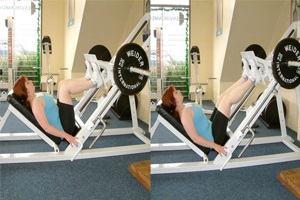injury prevention
The Chiropractor’s 6 Secrets to Avoid Back Injuries at the Gym!
 A large-scale University of Arkansas study found that after injuries to the hand, back injuries from the neck to the lower back were the most common type of gym-related injuries.
A large-scale University of Arkansas study found that after injuries to the hand, back injuries from the neck to the lower back were the most common type of gym-related injuries.
Back injuries at the gym are more common today due to the large amounts of time we spend sitting at a desk or hunched over a computer. Even when you’re inside dreaming of the outdoors or enjoying your time at the gym, you can set yourself up for injury if you’re not preparing correctly.
According to personal trainer Justin Price, a specialist in functional fitness and corrective exercise, “If someone is rounded throughout the day in their upper back, and then they go to the gym…their lower back has a nervous breakdown because it gets all the stress.”
Whether you are like one of my athletes training for competition or just someone who visits the gym regularly to keep fit, protecting your back and spine from injuries during workouts is important.
Here are 6 of my best secrets for gym-goers, to prevent injury when exercising or lifting weights:
1. Start with focusing on a strong core muscles– Price suggests that in order to avoid injury you should consider getting a personal trainer who can show you the proper way of performing exercises and using equipment. The most important way to maintain good spinal health is to strengthen your core muscles. These are the muscles that lend strength and support to the spine and they are also the muscles that tend to become weak from long periods of sitting.
2. Infuse your back muscles with energy – When muscles are left in a stretched-out state (like the outer part of an hunched-over back), they have to work harder than usual to tighten up when you need them. This can exhaust your muscles and drain your energy. When muscles are left in a state where they are constantly tightened (like the inside curve of a back with scoliosis – often present if your shoulder heights are not equal), they also get fatigued because they are constantly contracting. Either way you and your body will be tired without really doing anything.
To avoid fast fatigue by over-stretched or over-tightened muscles, have your back curvature checked by your chiropractor. He or she will be able to diagnose the subtleties of your back posture – whether it’s becoming over-rounded in some areas, over-straightened in others, or if you’re developing levels of scoliosis. If any of these is present in your back, you can exercise all you want but your muscles will not be working at their strongest (or highest performance) and you will be setting yourself up for pain and injury to your back, legs, arms, and shoulders.
3. Protect your back from bending stress– Tighten your gluteus (buttocks) muscles. When performing a squat, deadlift, or pushup, be sure to squeeze your glutes. This ensures that the muscles connecting your lumbar and sacral areas are locked so your hips and lower back move as a single unit. Otherwise there is a tendency for the lower back to curve or bend, with the vertebral discs being exposed to more stress than they are designed to handle.
4. Support your spine from a different angle– To provide stability to the spine as you bend and lift, you need to also consider supporting it from another angle. Like a tent needs all corners to be secure, your spine needs strength from all sides. Tighten your abs to keep your spine from arching too much in either direction and tighten your abdominal muscles like you are preparing to be punched in the stomach while you are bending and lifting.
5. Prevent one of the top causes of disc herniation– Pull your shoulders down and back – A rounded upper back is one of the leading causes of back injury. It increases pressure on the front side of the vertebral disks which is one of the leading causes of disc herniation.
6. Get your hips and shoulders working together– Keep your hips and shoulders aligned – Back injuries happen more often when twisting and bending. If you lead first with the shoulders, the hips tend to fall behind and react too late which results in excessive strain to your lower back muscles. Ensure that your hips and shoulders move as one unit. If you need to change direction, lead with the hips and the shoulders will follow.
Are you concerned about preventing injuries to your ankles, knees and hips? You’ll want to check out our free report right here on our website, “10 Questions to See if you are Heading Towards a Foot, Ankle or Knee Injury…and How to Prevent It”. You’ll learn how to identify issues ahead of time, even if you’re currently pain free.